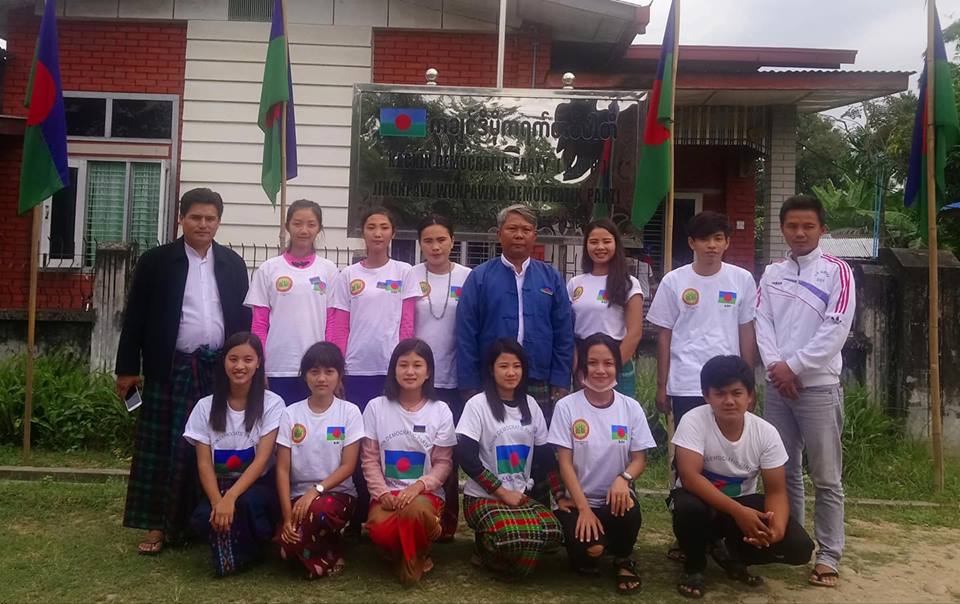
In 2012, Burma’s democratic reforms opened the door for competitive multiparty elections after many years of military rule and dictatorship.
Ushered in by the ruling and military-linked Union Solidarity and Development Party (USDP), these reforms ended the house arrest of Aung San Suu Kyi and provided the opportunity for her National League for Democracy (NLD) party to take power through peaceful, competitive elections in 2015.
While still grappling with the numerous difficulties that accompany post-civil war state-building, Burma’s relatively nonviolent transition from authoritarianism to federalism ignites hope for nascent democracies around the world—that election-based representative systems can gain momentum even within closing political spaces.
The NLD’s rise to power represents considerable progress toward democracy, although the country’s 2008 constitution leaves much of the power in the hands of the military. Significant challenges remain on the path to democracy in Burma, however, including the lack of political voice for the country’s ethnic minorities, many of whom live in conflict-affected states that have long been marginalized under many decades of military rule.
Despite the efforts of ethnic minorities to organize parties that represent their interests, most ethnic parties have witnessed little success in recent elections due to ethnic party fragmentation, limited access to resources for campaigning, and a playing field that strongly favors big parties like the NLD and the USDP.
Recognizing the challenge ethnic minorities faced in achieving political representation in the 2018 by-elections in Kachin State, one of Burma’s conflict-affected states, ethnic political parties were able to field a joint candidate for the first time. The chairperson of the Kachin Democratic Party (KDP), Gumgrawng Awng Hkam, ran for an upper house seat in Myitykina Constituency, the capital of Kachin State, as the joint candidate of four Kachin ethnic parties: the KDP, the Kachin National Congress, the Unity and Democracy Party of Kachin State and the Kachin State Democratic Party.
Although the KDP finished second in the race, it was a dramatic improvement over the 2015 performance of Kachin parties for this seat, when no Kachin party received over seven percent of the vote. Awng Hkam, through an electoral alliance with other Kachin parties, captured over 19,000 votes (28 percent), which challenged the two largest parties.
Awng Hkam’s strong performance demonstrated the value of parties working together to achieve a common goal; in this case, representation of the political interests of ethnic Kachin people. This representation comes at a crucial juncture in Kachin politics: Kachin, which lies between China and India, is under considerable political pressure from both and is trying to negotiate the role of China.
Awng Hkam has been advocating for the merger of Kachin parties in order to ensure better representation of Kachin State and the interests of the Kachin people. Leading up to the by-elections, Awng Hkam participated in a Consortium for Elections and Political Process Strengthening (CEPPS) and IRI-hosted Political Party Academy (PPA) in Myitkyina, Kachin State in September 2018. Six party leaders who helped Gumgrawng Awng Hkam in his campaign for the upper house and 35 representatives from 12 political parties participated in the academy.
According to Awng Hkam, the Political Party Academy, which focused on constituent engagement and policy development, helped him prepare for both the 2018 by-election campaign and for the 2020 general election.
In the 2018 by-election, Awng Hkam’s campaign team cooperated with other Kachin parties in applying the techniques and best practices taught by CEPPS and IRI, such as using coalition building, carrying out grassroots activities, and conducting constituent mapping and data analysis. As a result of these efforts, the leaders of the other Kachin parties stood with Awng Hkam during the 100 community meetings held as part of his campaign and also conducted joint events on supporting victims of the conflict and fighting in Kachin State between the Myanmar Armed Forces and ethnic armed organizations representing the Kachin and other groups. This conflict, which began in 1961, has led to thousands killed and over 100,000 displaced persons, causing untold misery among the many citizens caught up in the war.
Awng Hkam said that the advice from CEPPS/IRI not only helped him in the 2018 by-election but has also prepared him for the 2020 general election, particularly the recommendation that candidates meet with their constituents and then focus their messaging on serving the people. Together with his campaign team, he campaigned house-to-house in parts of Myitkyina town where most of the Kachin ethnic population resides. This helped him connect directly with Kachin constituents and understand their priorities. The door-to-door campaign also gave his team the opportunity to collect firsthand data regarding constituent concerns, which included displacement due to conflict, land-grabbing and the impact of illegal drugs. Their review of election results and constituent mapping helped the team better understand where to deploy their resources for the 2020 elections. Despite losing the election, the KDP considered it a success for rising to second place in the polls.
As the second nationwide general election to be held democratically, the 2020 elections will demonstrate the extent to which the NLD still remains popular and if any progress has been made to extricate military influence from political decision-making. With the Rohingya crisis and numerous other ongoing ethnic conflicts drawing the attention of the international community and human rights watchdogs, Burma’s 2020 elections will also demonstrate whether the government elected in 2015 has done an effective job representing ethnic minority interests. Transforming Burma’s government into an inclusive democracy is a challenge that ultimately remains in the hands of voters and dedicated elected officials.
Top